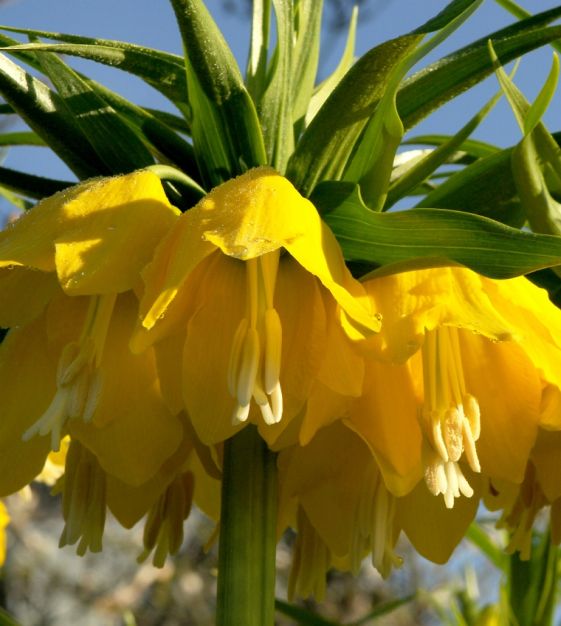-
- Discounted Collections
- Website Specials
- New for 2025!
- Tulips
- Narcissi
- Allium
- Anemone blanda
- Brodiaea
- Camassia
- Chionodoxa
- Corydalis
- Crocus
- Eranthis
- Eremurus
- Erythronium
- Fritillaria
- Galanthus
- Geranium
- Gladiolus
- Hyacinths
- Hyacinthoides
- Ipheion uniflorum
- Dutch Iris
- Rock Garden Iris
- Ixiolirion
- Leucojum aestivum
- Muscari
- Ornithogalum
- Oxalis
- Puschkinia
- Scilla
- Lilies
- Peonies
- Amaryllis
- Paperwhites
- Tender Bulbs
- Anemone Giants
- Tecolote Ranunculus
- Freesias
Fritillaria imperialis Maxima Lutea
Dating back to 1867, this statuesque Crown Imperial has a prominent cluster of up to ten pendant, bell-shaped, vibrant yellow flowers under a showy hat of upright foliage atop a strong, almost pole-like, stem. Lance-shaped foliage adorns the lower portion of the flowering stem. Make sure to appreciate its interior beauty: each flower has green-edged white nectories that look like eyes, and prominent, long, decorative anther-tipped stamen and pistils. Fritillaria imperialis (Crown Imperial) were native to the western Himalayas as far back as 1590. Deer- and rodent- resistant, the bulbs have a rather unpleasant funky, skunky smell. Bulb size: 20 cm/up. Full to dappled sunlight. Bloom time in horticultural zone 5: April/May. Plant 6" to 7" deep and 8" to 10" apart. HZ: 5-8. Height: 36".
Fritillaria are The Art & Soul of Spring.
Fritillaria Horticultural Tips
Fritillaria are The Art & Soul of Spring.
Fritillaria Horticultural Tips





